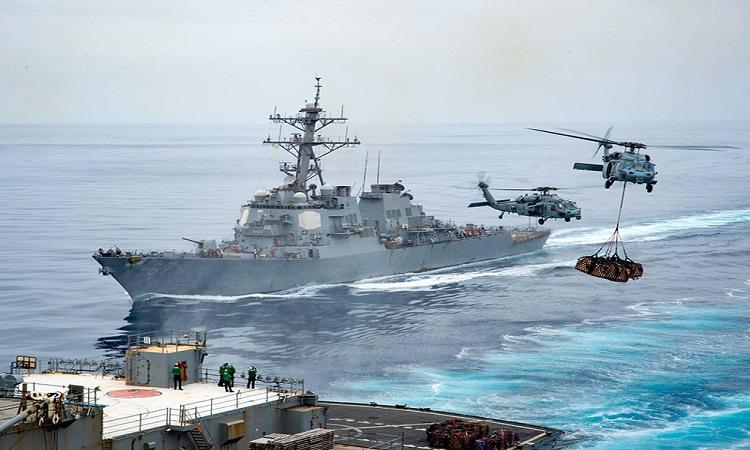Combat System Integration Market Rises with Command and Control Focus

Combat System Integration Market grows with rising defense budgets, tech advances, and demand for efficient, multi-domain operational capabilities worldwide.
According to a report by TechSci Research, the global Combat System Integration Market was valued at USD 25.09 billion in 2024 and is projected to reach USD 60.43 billion by 2030, growing at a compound annual growth rate (CAGR) of 10.26% during the forecast period. This growth is being driven by a confluence of factors, including rising global defense budgets, rapid technological advancements, and the increasing need for integrated multi-domain operational capabilities in modern warfare.
As geopolitical tensions escalate in various regions, governments are prioritizing the modernization of their armed forces. This includes substantial investments in integrated combat systems that can operate efficiently across land, air, sea, space, and cyber domains. These systems provide enhanced situational awareness, improved command and control capabilities, and superior interoperability between different military platforms. The demand for real-time data exchange, coordinated strikes, and seamless mission execution has led to a significant push towards the development and adoption of combat system integration solutions.
One of the most significant trends fueling market expansion is the incorporation of advanced technologies such as artificial intelligence (AI), machine learning (ML), advanced radar systems, electronic warfare, and autonomous systems into defense platforms. AI and ML, in particular, are transforming combat strategies by enabling predictive threat analysis, automated decision-making, and faster response times. These technologies are now being embedded into core combat systems to enhance their responsiveness and accuracy during missions.
Increased governmental support, especially in the airborne defense segment, is a key driver of the combat system integration market. Several countries are investing heavily in the modernization of their air forces by integrating cutting-edge sensors, surveillance equipment, communication systems, and precision weaponry into fighter aircraft, surveillance planes, and UAVs (unmanned aerial vehicles). Governments are also offering incentives for R&D initiatives and forming strategic collaborations with defense contractors to develop next-generation integrated systems that meet the dynamic demands of future warfare.
This growing emphasis on airborne system modernization is enabling faster adoption of integrated combat platforms that can communicate and operate with other assets, such as naval vessels and ground forces. The seamless connectivity between airborne and other military platforms ensures a synchronized approach to surveillance, threat detection, and mission execution, which is vital in modern conflict scenarios.
Market Segmentation
The global Combat System Integration Market is segmented by application, platform, and region, each offering unique insights into emerging trends and key opportunities.
Platform Insights
Among platforms, the fighter aircraft segment is emerging as the fastest-growing segment of the market. This is largely due to the increasing focus on upgrading aircraft fleets with highly advanced combat systems. Modern fighter jets are now being equipped with AI-enabled decision support tools, integrated weapon systems, networked communications, and electronic countermeasures to perform a wide range of mission profiles in contested airspaces.
Additionally, the growing requirement for interoperability between air, land, and sea platforms is prompting military forces to prioritize integration solutions that can ensure seamless information sharing and joint operations. Countries across North America, Europe, and Asia-Pacific are investing in both new-generation fighter aircraft and retrofitting existing fleets to enhance performance, survivability, and mission flexibility.
Browse over XX market data Figures spread through XX Pages and an in-depth TOC on "Global Combat System Integration Market.”
https://www.techsciresearch.com/report/combat-system-integration-market/27290.html
Regional Outlook
Regionally, Asia-Pacific stands out as the fastest-growing market for combat system integration. The region is witnessing a surge in defense expenditure due to heightened geopolitical tensions, territorial disputes, and the strategic need to build credible deterrence capabilities. Countries like China, India, Japan, and South Korea are actively upgrading their military systems and acquiring advanced technologies to support integrated combat operations.
In China and India, increasing border tensions and regional power dynamics are driving major investments in high-tech defense platforms. Japan and South Korea, on the other hand, are leveraging technology to bolster their defense posture and improve joint operational capabilities with allied forces. Moreover, Asia-Pacific’s growing collaboration with global defense contractors and alliances with Western countries are accelerating the adoption of modern combat integration solutions.
Improved regulatory environments, increasing domestic defense production, and long-term procurement programs in the region are also contributing to the expansion of the market. As governments in Asia-Pacific aim to reduce dependency on foreign imports and build indigenous capabilities, demand for locally integrated systems is growing rapidly.
Market Challenges and Opportunities
Despite the optimistic growth outlook, the Combat System Integration Market faces several challenges. These include high development costs, the complexity of integrating multiple subsystems, and the need for standardized communication protocols across various platforms. Additionally, maintaining cybersecurity in interconnected systems is becoming increasingly crucial as digital threats pose risks to national security.
Nevertheless, the opportunities outweigh the challenges, especially as defense contractors collaborate with technology firms to develop scalable, modular, and interoperable combat solutions. The shift towards multi-domain operations (MDO) and network-centric warfare (NCW) strategies globally is further expected to drive innovation in this space. Governments are increasingly issuing contracts and tenders for integrated systems, opening up lucrative opportunities for market players.
Conclusion
In summary, the global Combat System Integration Market is poised for substantial growth through 2030, driven by increasing defense modernization initiatives, the integration of emerging technologies, and the growing emphasis on multi-domain interoperability. As global security dynamics continue to evolve, integrated combat systems will play a pivotal role in enhancing military readiness, operational flexibility, and
- Art
- Causes
- Crafts
- Dance
- Drinks
- Film
- Fitness
- Food
- Juegos
- Gardening
- Health
- Home
- Literature
- Music
- Networking
- Other
- Party
- Religion
- Shopping
- Sports
- Theater
- Wellness
- Travels

